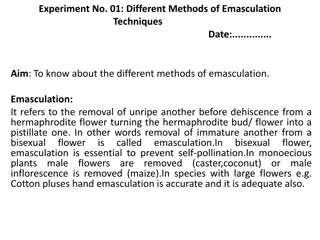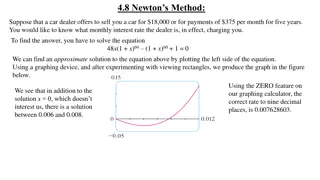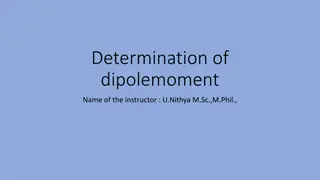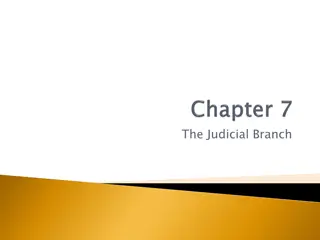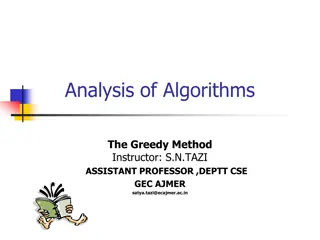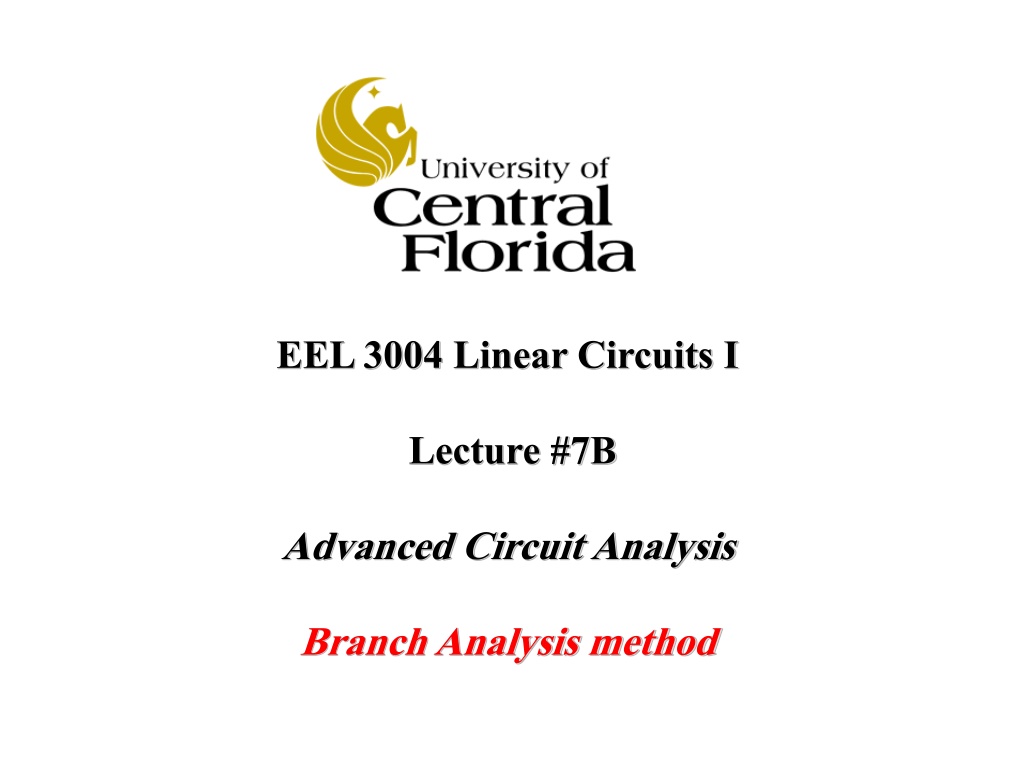
Advanced Circuit Analysis Techniques: Branch Analysis Method Explained
"Explore the Branch Current Analysis method in advanced circuit analysis. Learn about elements, loops, nodes, and solve examples using direct analysis. Understand how to assign currents and voltages, apply KVL and KCL equations, and solve circuit problems effectively."
Download Presentation

Please find below an Image/Link to download the presentation.
The content on the website is provided AS IS for your information and personal use only. It may not be sold, licensed, or shared on other websites without obtaining consent from the author. Download presentation by click this link. If you encounter any issues during the download, it is possible that the publisher has removed the file from their server.
E N D
Presentation Transcript
EEL 3004 Linear Circuits I Lecture #7B Advanced Circuit Analysis Branch Analysis method
Lecture Objectives CHAPTER 4 ADVANCED CIRCUIT ANALYSIS TECHNIQUES A) Three Analysis Methods: 1) Branch Current method (Direct Analysis ) 2) Voltage Node analysis 3) Mesh Current Analysis B) Three Network Theorems: 1) Superposition 2) Thevenin 3) Norton C) Maximum Power Transfer Concept
Lecture Objectives The lecture today will focus on: Defining terms such as elements, branches, nodes, circuit paths, loops, and meshes. Introducing the Branch Current Analysis (Direct Method). Solving examples with different combinations of circuit elements and requirements. Illustration through solving examples.
Branch Current Analysis (Direct Method). Let us consider a circuit that has n-loops and m-nodes: Steps: 1) Assign branch currents, one current for each element or for each element 2) Assign m node voltages, one for each node (one node for ground) 3) Write n KVL equations, once equation for each loop in terms of branch currents 4) Write m KCL equations, one at each node in terms of node voltages. 5) Solve n+m equations for all n branch currents and m node voltages.
Example Determine the currents and voltages across the resistors and the labeled voltages vx and vy by using the direct method (branch method). Note: We have three branches: we can assign three branch currents
Example Determine the currents and voltages across the resistors and the labeled voltages vx and vy by using the direct method (branch method). Note: We have three branches: we can assign five element currents
Solution: Or We assign currents to each resistor as follows: We have two loops: need to KVL equations Apply KVL to the two loops: L1: -V1+R1xiR1+R2xiR2 + R3xiR3=0 Note that: L2: iR1=iR3 and iR4=iR5 +R4xiR4+ V2 +R5xiR5 R2xiR2=0
Now we write the Node Equations: There are two main nodes. But we assign one node arbitrarily to the ground node (zero) as shown: Unknow Currents: iR1 , iR2,iR3 , iR4, iR5 We need five equations: iR1=iR3 iR4=iR5 -V1+R1xiR1+R2xiR2 + R3xiR3=0 KCL at Node (a): +R4xiR4+ V2 +R5xiR5 R2xiR2=0 iR1=iR2 + iR4 iR1=iR2 + iR4 Now we solve for the five currents
Next we solve for Vx and Vy: Vy= R1xiR1 + R4xiR4 Vx=V2+ R5xiR4
Example Determine the currents and voltages across the resistors, and the voltages vx and vy. Variable Values Unit V1 V2 I1 I2 R1 R2 R3 R4 8 V 4 V 120 mA 50 mA 12 22 18 30
Solution: Note: i) We have three loops. But KVL equation cannot be written around a loop that has a current source. So, we only have one KVL: 2) Only four branches that have no current assigned. So, we assign currents: iR1 iR2 iR3. iR4
KCL at node a: KCL at node b : KCL at node c : KVL to loop with no current sources:
KCL at node a: KCL at node b : KCL at node c : KVL to loop with no current sources:
KCL at node a: KCL at node b : KCL at node c : KVL to loop with no current sources:
KCL at node a: KCL at node b : KCL at node c : KVL to loop with no current sources:
KCL at node a: (1) KCL at node b : (2) KCL at node c : (3) KVL to loop with no current sources: (4) Note: There are four unknowns and four equations: iR1, iR2, iR3, iR4
The currents can be calculated to be: Therefore the voltages are:
The currents can be calculated to be: Therefore the voltages are: Check at node b: iR1+I1=iR2 ---> -39+120=81 OK
Applying KVL to the first loop: Applying KVL to the second loop: Solving for vx: Solving for vy:





